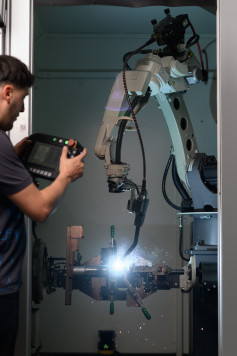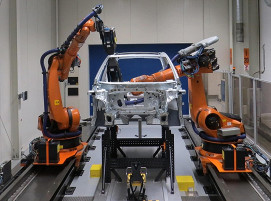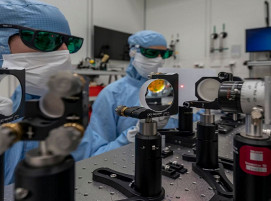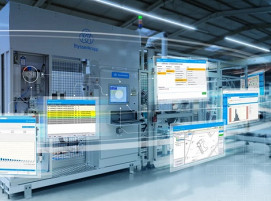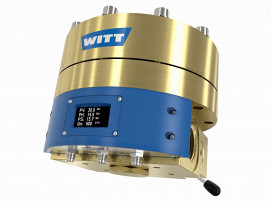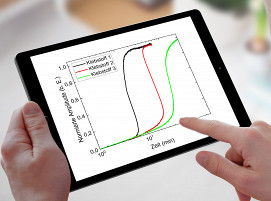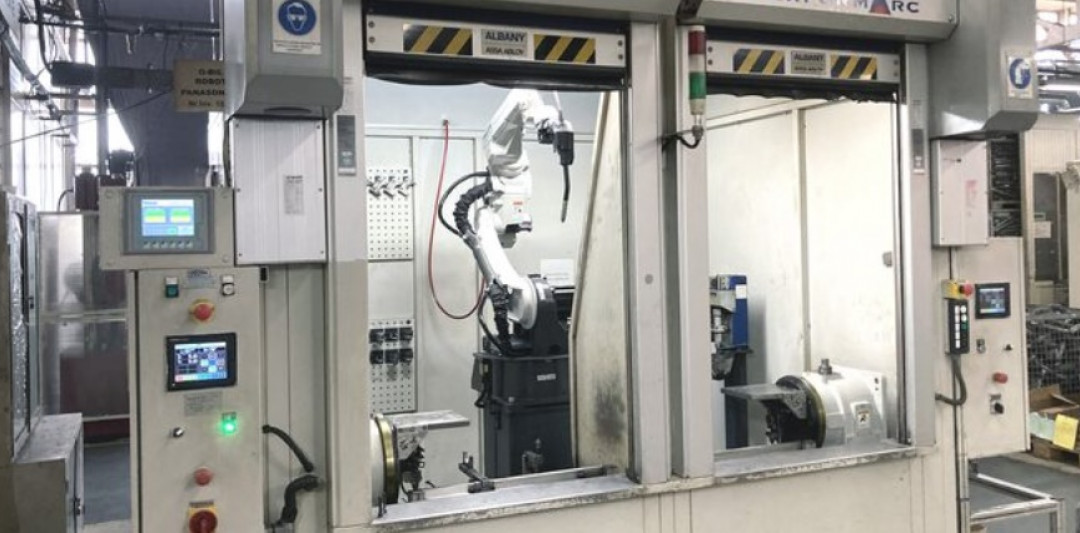
Production with increased speed and flexibility
After more than a decade of reliable operations, two welding robot cells were about to face end-of-life. Thyssenkrupp’s team on site, with the support of Panasonic and its partner, was charged with the task to develop a retrofit concept for the automotive welding robot cells in a financially competitive scenario.
The first welding robot cell has been upgraded to the G4 Welding Robot System – and the de-installed components will function as a source for spare parts for the second oldest robot cell. The upgrade becomes even more efficient with the DTPS offline programming software installed two years ago and a coming iWNB installation, enabling remote digital access to real time production and system operating data.
The automotive supplier maintains 3 plants in Transylvania, the central region in Romania. Near the city Sibiu, more than 1290 employees manufacture OEM shock absorber assemblies, assemblies for the aftermarket sector and components. The company is a big employers in the wider region and keen to maintain that position. The increased speed, flexibility and usability of the TAWERS G4, the newest robot system from Panasonic, will become an integral part of the strategy. In total 6 TAWERS equipped robot welding cells from Panasonic are operating in the plant manufacturing for the aftermarket sector. With the first one installed in 2013 and the latest in 2023. The first ever installed cell has now been upgraded to TAWERS G4.
Madalin Cirjan is welding manufacturing engineer in Sibiu and part of the team responsible for the process optimization. “Panasonic helped us to find an intelligent and cost-efficient way of retrofitting”, he states. The scope of the first step is replacing the oldest cell, the second oldest is about to be included in an upgrade very soon – but until then, parts from cell one will be utilized as spare parts and therefore increasing the lifespan of cell two and save costs.
Next to the smart reuse, the new system provides a lot of advantages. The controller processing speed has increased and the communication between controller and robot has been optimised. Additional features like the new generation of teach pendant with touch screen function has also turned out to be very useful.
Madalin emphasizes: “The faster processing time and the touchscreen controller are clearly the main advantages from our side. Also, that the system is more compact due to the newly integrated transformer is positive, even though space saving in our plant is not a big issue, it is still not irrelevant.”
Improving the digital impact on the shopfloor already started in 2022: The first step was the change to Panasonic’s DTPS software, installed in 2022. With the offline programming of the welding process, the production itself is not affected. Florin Dobrita, Head of Manufacturing and Process Planning, stresses the advantages for the factory: “We can reprogram all or just some parts, while the robot is still running. For a new welding, up to 3 days programming is not uncommon – carrying this out outside the shopfloor saves a lot of time.”
Vincent Lonsdale, Key Account Manager at Panasonic Connect, explains: “Before you spend one cent on the prototyping process, you can test and simulate whatever modifications you wish to make offline, in a digital environment. All of this is done outside of the shopfloor – no dust, no heat, no noise. Full focus on the new or modified program, welding fixture or process, without shopfloor production distractions.”
Another advantage Christian Kather, the Technical Training Manager from Panasonic Connect, points out, is Panasonic’s capability to align the cells, even though of different robot types, to one standard – which again allows for more flexibility: “The customer asked us to ensure the copy function of programs is working from each cell. Which can not only save time, but in case the original indicated robot cell is occupied with another project, there are now 5 more that can be used instantly with almost no additional ramp-up efforts.”
(Source: Panasonic Connect)
Schlagworte
AutomotiveDigitalizationManufacturingProcessingRobots



